Biodiversity, often described as the tapestry of life on Earth, is not just an abstract concept; it's the heartbeat of our planet. It encompasses the incredible variety of living organisms, from the smallest microorganisms to the majestic creatures that roam our landscapes. In this blog, we will embark on a journey through the intricate web of biodiversity, uncovering its profound significance for ecosystems and the future of our world.
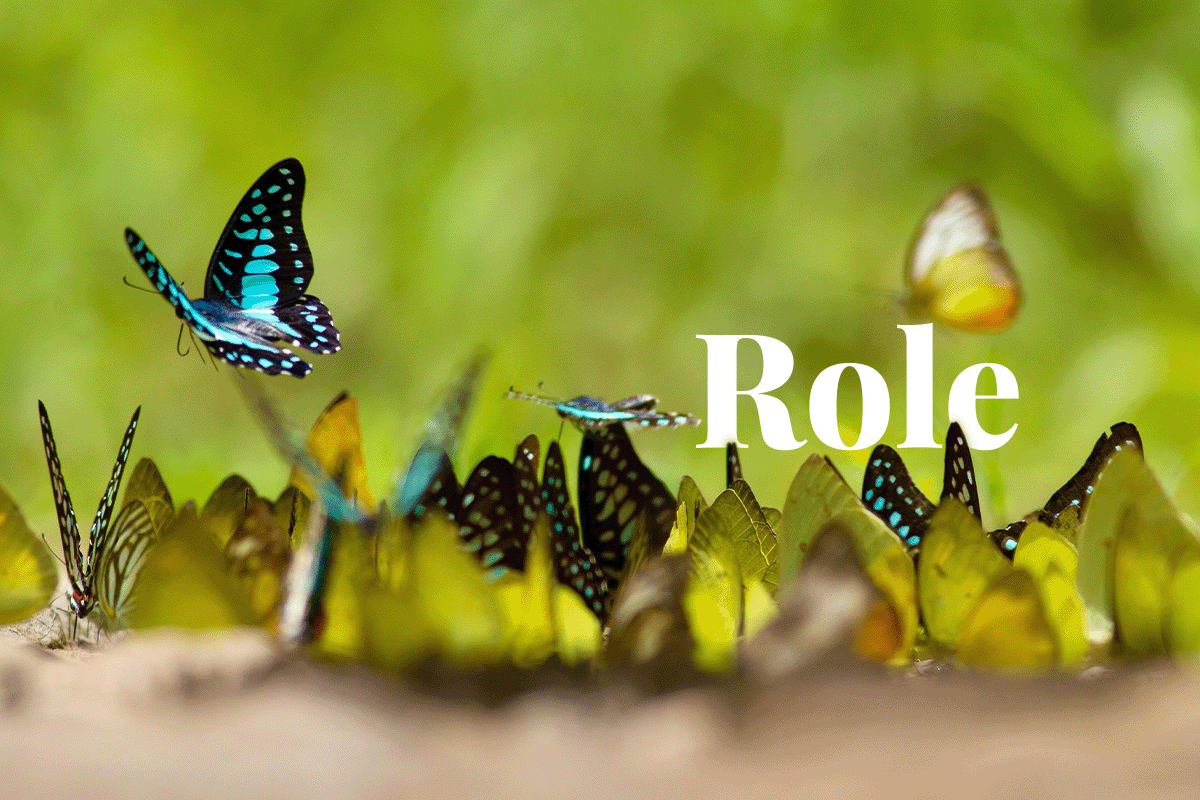 Close-up of a flock of colourful butterflies.
Close-up of a flock of colourful butterflies.
At its core, biodiversity is a celebration of life's diversity. It encompasses the multitude of species, their genetic variations, and the rich array of ecosystems they call home. Biodiversity is the lifeblood of our natural world, a symphony of life that shapes the Earth's landscapes and sustains its ecosystems. However, a 2022 report by the World Wildlife Fund revealed an alarming average decline of 69% in species populations since 1970, highlighting the urgent need for conservation.
Read more: Nature’s symphony: 15 Interconnected wonders of biodiversity
In this article, we’ll explore why biodiversity is an essential pillar of the ecosystems that cradle life. Ecosystems thrive when they're brimming with diverse species, each contributing a unique role. Biodiversity is the guardian of ecosystem stability, promoting resistance to environmental changes and preventing invasions by harmful non-native species. It plays a role in clean water and air, climate regulation, disease control, and even food production. Biodiversity is an economic and ecological necessity, not a luxury.
The significance of biodiversity
Biodiversity is a fundamental cornerstone of our natural world. Its significance lies in its multifaceted role in preserving the health and stability of ecosystems, which, in turn, underpins life on our planet.
Read more: Where are the world's biodiversity hotspots?
Ecosystems are like intricate jigsaw puzzles, with each species representing a unique piece. The disappearance of even a single species can disrupt this delicate balance. Biodiversity ensures that ecosystems remain robust and resilient. It's the safety net that keeps ecosystems from unravelling when faced with disturbances. Healthy ecosystems are vital for several reasons:
- Resistance to environmental changes: Biodiversity allows ecosystems to adapt to changing environmental conditions. A diverse range of species ensures that some can thrive even when others falter in response to shifts in temperature, precipitation, or other factors.
- Protection against invasive species: Diverse ecosystems are less susceptible to invasion by harmful non-native species. This defence mechanism is crucial for preserving the integrity of native ecosystems.
- Ecosystem services: Healthy ecosystems provide a wide array of services that are indispensable for human survival, such as clean water, pollination, and climate regulation. Without biodiversity, these services are compromised.
Read more: 10 Vital ecosystem services: sustaining life on Earth
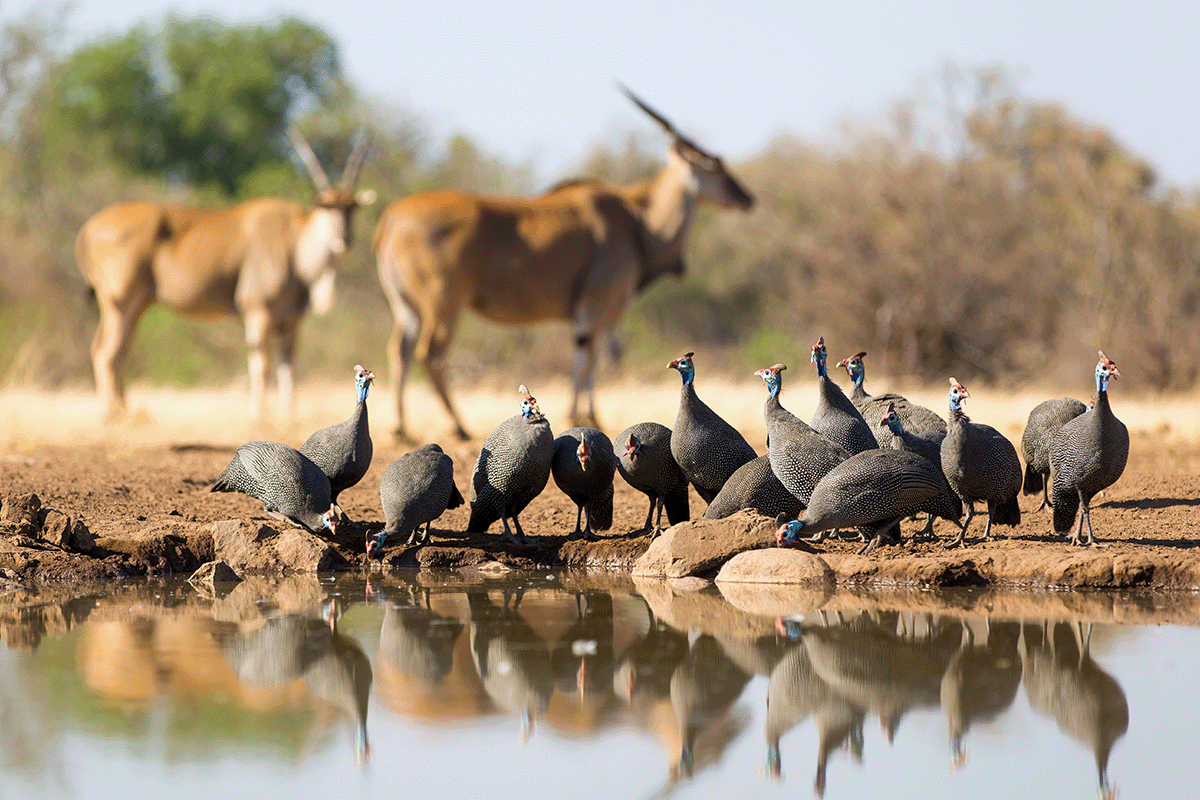 A small flock of guinea fowl at a waterhole with two out-of-focus eland in the background, Mashatu Game Reserve, Botswana.
A small flock of guinea fowl at a waterhole with two out-of-focus eland in the background, Mashatu Game Reserve, Botswana.
Biodiversity goes beyond being a mere biological marvel; it is a fundamental requirement for both our environment and economy. Ecosystems teeming with a variety of species provide a wide array of indispensable services that underpin human welfare:
- Pollination: Bees, butterflies, and other pollinators facilitate the reproduction of plants, including many of the crops we rely on for food.
- Clean water: Wetlands and forests filter pollutants from water, ensuring we have a clean and reliable water supply.
- Climate regulation: Forests, oceans, and other ecosystems store carbon, helping to mitigate environmental instability.
- Disease control: Biodiverse ecosystems can reduce the prevalence of diseases by regulating the populations of disease-carrying organisms.
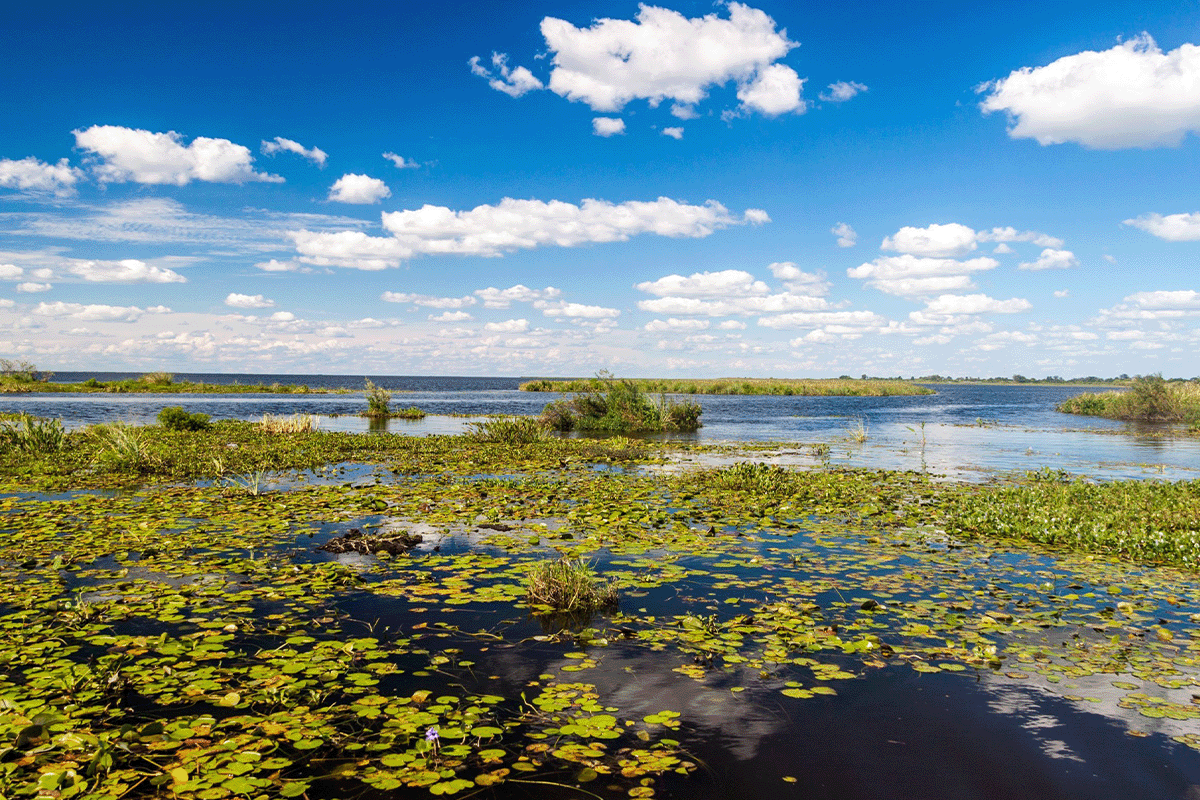 Wetlands in Nature Reserve Esteros del Ibera, Argentina.
Wetlands in Nature Reserve Esteros del Ibera, Argentina.
Imagine an intricate web where every thread connects to another. That's the essence of biodiversity—the interconnectedness of species. Whether we're discussing top predators or microorganisms, each species plays a unique role in the web of life. When one strand breaks, the entire web weakens. The demise of one species can trigger a cascade of negative effects on others. This interconnectedness reminds us that we are not separate from nature but part of a larger, interdependent system.
Understanding the significance of biodiversity is our first step towards appreciating why its loss is a cause for concern. In the following sections, we will delve deeper into the factors causing biodiversity loss and its far-reaching consequences for our ecosystems and our own wellbeing.
Causes of biodiversity loss
Biodiversity loss is a complex and multifaceted issue driven by several interrelated factors. These factors are at the heart of the challenges facing our natural world:
-
Habitat destruction: The continuous expansion of human settlements and the conversion of land for agriculture have led to the widespread destruction of natural habitats. As forests are cleared and wetlands drained, countless species lose their homes, forcing them to adapt or face extinction.
-
Changing environmental conditions: Environmental instability has a profound impact on ecosystems. Altered temperature patterns, shifting precipitation, and rising sea levels disrupt the delicate balance of these systems, challenging species' ability to adapt and thrive.
-
Pollution: The release of pollutants into the environment has dire consequences for biodiversity. Air pollution, water contamination, and soil degradation harm both terrestrial and aquatic life. As ecosystems become increasingly polluted, they can no longer support the diverse range of species that depend on them.
-
Invasive species: The introduction of non-native species into ecosystems can have devastating effects on local flora and fauna. Invasive species often outcompete native ones for resources, disrupt food chains, and introduce diseases. This competition and disruption can lead to the decline or extinction of native species. Reports show that approximately 42% of threatened or endangered species are at risk due to invasive species.
-
Overexploitation: Hunting, fishing, and resource extraction by humans place immense pressure on natural populations. Overexploitation results in dwindling populations and the potential collapse of ecosystems. Species that are harvested beyond sustainable levels are pushed toward endangerment or extinction.
Understanding these key drivers of biodiversity loss is essential to address the challenges we face in conserving our planet's diverse array of life forms. In the following section, we will explore the consequences of these factors and the urgent need for conservation efforts.
Read more: Trees are nature's water managers: the importance of trees in water conservation
Impacts of biodiversity loss on ecosystems
Biodiversity loss isn't a phenomenon confined to academic discussions; it is a real threat that has far-reaching consequences affecting the very fabric of our natural world. Let’s take a look at the profound impacts of this loss on ecosystems, highlighting the interconnectedness of these effects:
Decrease in species
As species disappear, we witness a significant decrease in biodiversity within ecosystems. A recent study showed that 48% of species are decreasing, while only 3% are on the rise. This loss of diversity affects the intricate balance that allows ecosystems to thrive. When species vanish, the variety of traits and functions they bring to ecosystems diminishes, leaving these environments less resilient and more vulnerable to disturbances.
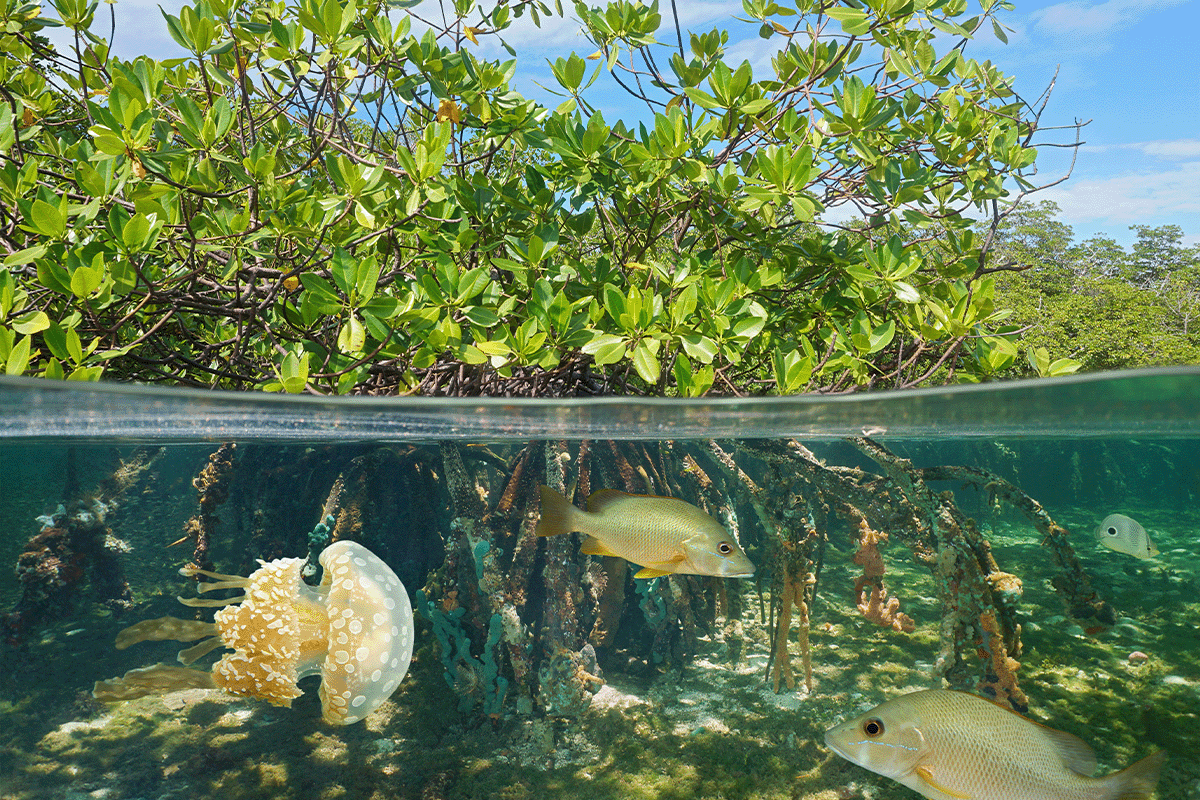 Mangrove above and below the water surface, Caribbean Sea.
Mangrove above and below the water surface, Caribbean Sea.
Disruption of food webs and impact on global food security
Ecosystems are built on intricate food webs, where each species plays a role in maintaining the balance. Biodiversity loss disrupts these webs as species disappear or their populations decline. The consequences reach far beyond nature, impacting global food security. Pollinators, such as bees, are vital for crop production, and their decline threatens our ability to produce the food we rely on.
Read more: The importance of forests in bumble bee conservation
Reduced ecosystem resilience
Biodiverse ecosystems possess a remarkable capacity to withstand and recover from environmental challenges. However, as biodiversity declines, ecosystems become less resilient. They struggle to adapt to changing conditions, making them more susceptible to disturbances like extreme weather events, diseases, and invasive species. This reduced resilience can result in ecosystem collapses.
Increased disease, pests, and invasive species
Healthy ecosystems often act as natural barriers against disease and invasive species. However, as biodiversity decreases, these defences weaken. The loss of certain species, particularly predators or competitors, can lead to the proliferation of disease vectors and invasive species. This has direct implications for human health and the stability of ecosystems.
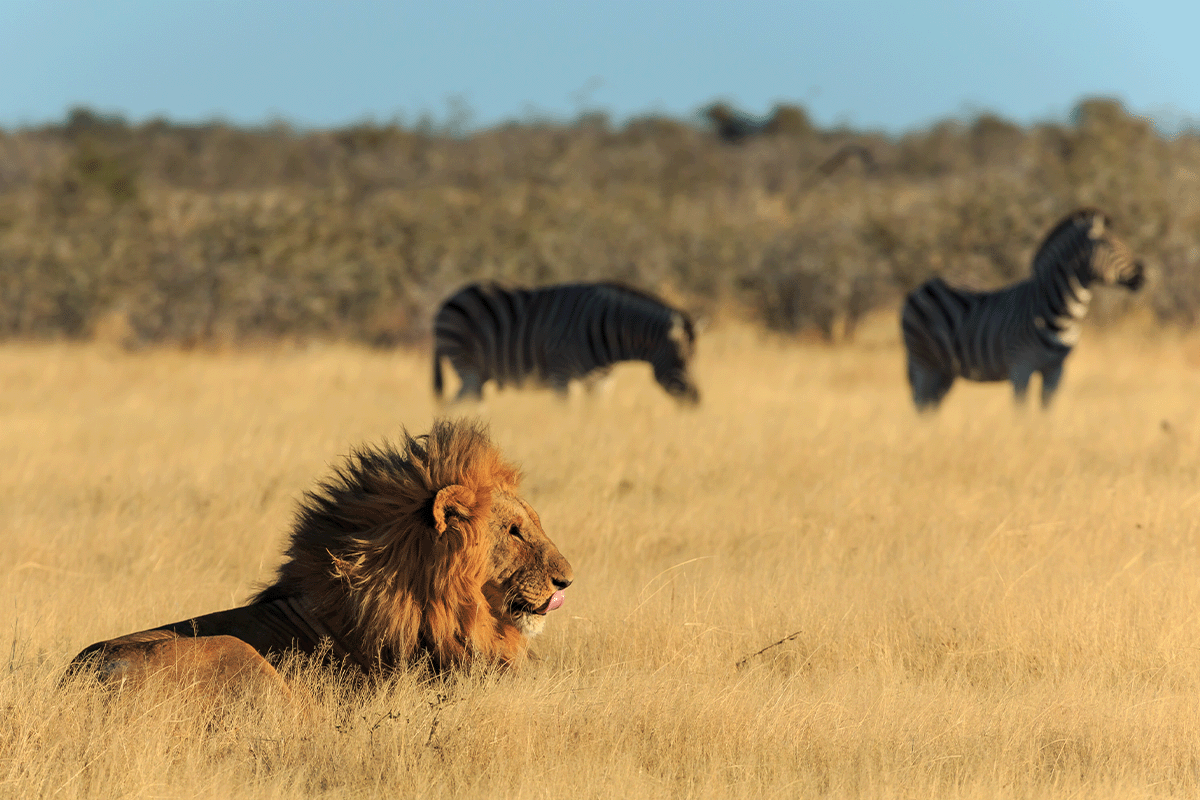 African landscape with a resting lion and zebras in the background.
African landscape with a resting lion and zebras in the background.
Decline in ecosystem services
Perhaps the most tangible impact of biodiversity loss is the decline in ecosystem services. These services, ranging from clean water and air to climate regulation and disease control, are integral to human wellbeing. As biodiversity erodes, these services become compromised, posing challenges to our survival and quality of life.
The impacts of biodiversity loss are not isolated; they are interconnected and have profound implications for both natural and human systems. To understand the full extent of these consequences, we must delve deeper into the specific examples and case studies that illustrate these effects.
Case studies and examples
Let's take a closer look at some real-world examples that highlight the impacts of biodiversity loss, but remember, it's not all doom and gloom. These examples also reveal our power to make a positive change.
The decline of coral reefs
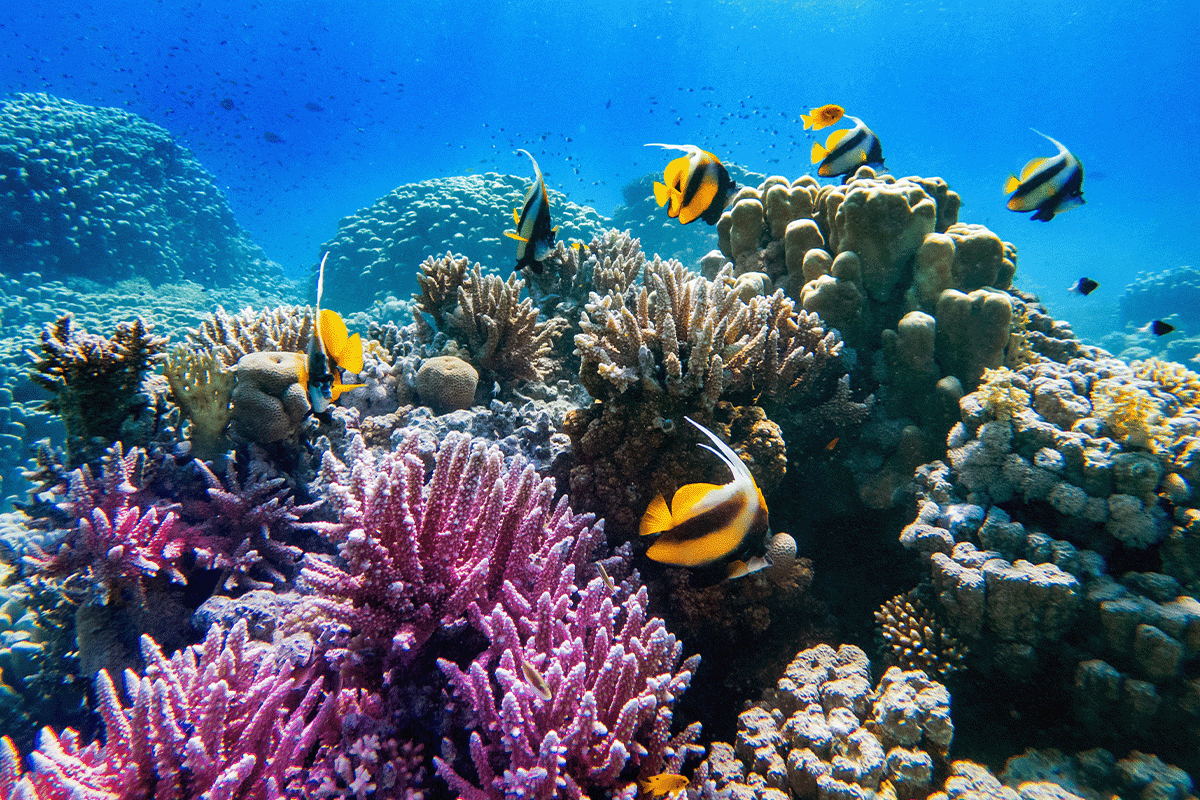 Colourful corals and exotic fishes at the bottom of the Red Sea.
Colourful corals and exotic fishes at the bottom of the Red Sea.
Coral reefs, often referred to as the ‘rainforests of the sea’, enchants divers and biologists alike with their vibrant colours and mesmerising biodiversity. But beneath the surface, these ecosystems are facing challenges. Rising sea temperatures, plastic waste, and ocean acidification have caused coral reefs worldwide to suffer. This decline has consequences for marine ecosystems and the countless species that call these reefs home. When coral species vanish, their vibrant structures weaken, impacting fish habitats and reducing the allure for divers and tourists. Yet, this challenge has spurred remarkable efforts in marine conservation as scientists and activists work tirelessly to protect and restore these precious underwater ecosystems.
Read more: How to protect the oceans and marine life
The vanishing of amphibians
Amphibians, from frogs to salamanders, are a fascinating and diverse group of animals that inhabit both aquatic and terrestrial ecosystems. However, these creatures are currently facing a crisis. Habitat destruction and disease have caused widespread declines in amphibian populations. This loss affects not only the ecosystems these amphibians inhabit but also the balance of entire food chains. While the decline is indeed a concern, it's heartening to see the dedication of scientists and conservationists in their efforts to protect these unique creatures.
Read more: Why should endangered species be protected?
Grasslands of the American Midwest
The grasslands of the American Midwest, with their rolling plains and abundant wildlife, tell a story of both triumph and challenge. The decline of native grassland species has disrupted these ecosystems, with implications for herbivores like bison and pronghorn. However, efforts to restore and preserve these grasslands showcase the positive side of conservation. These actions help preserve not only the landscape but also the intricate relationships between species that make these grasslands so remarkable.
While these examples illustrate the impact of biodiversity loss, they also remind us of the potential for positive change and conservation efforts that are underway. It's not too late to safeguard our natural world and the diverse species that call it home.
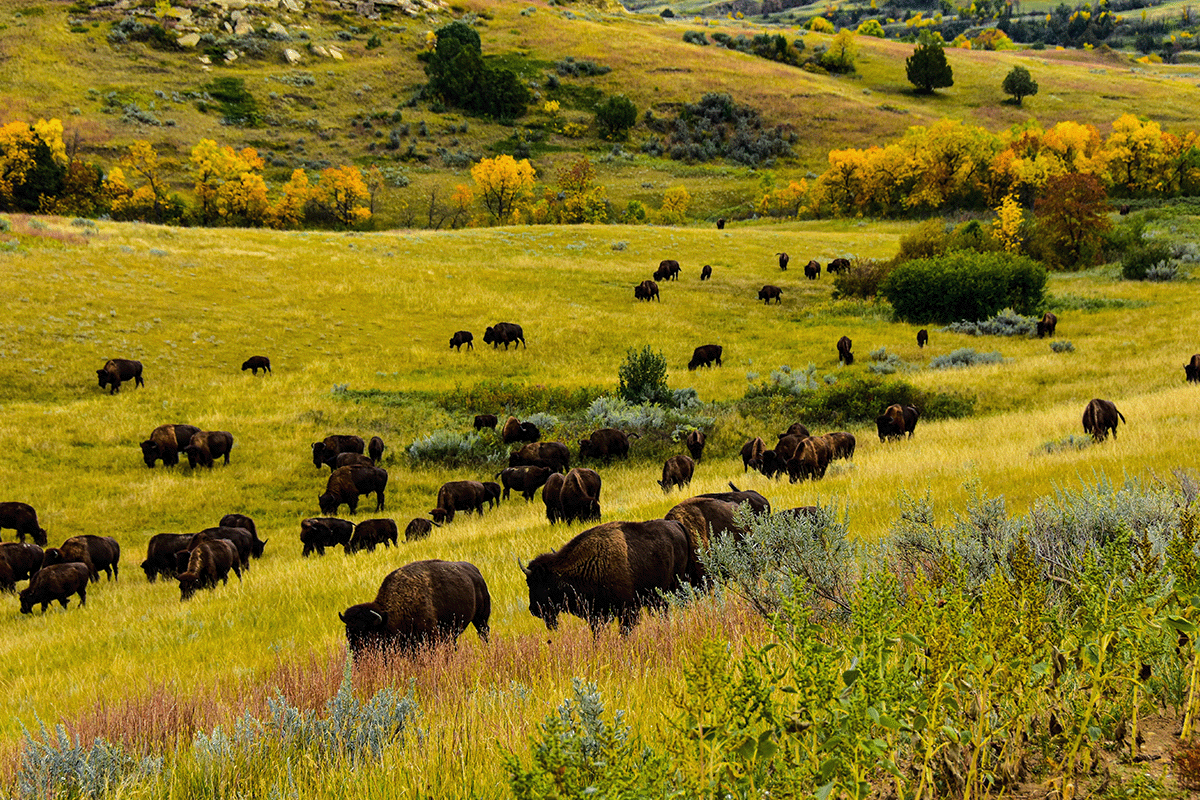 Herd of buffalo roaming and grazing on the vast badlands of North Dakota.
Herd of buffalo roaming and grazing on the vast badlands of North Dakota.
What we can do to help
Biodiversity loss may present challenges, but the good news is that there's much we can do to help preserve our natural world. Let's explore various avenues for action:
Conservation strategies
- Habitat protection and restoration: One of the most effective ways to safeguard biodiversity is by protecting and restoring natural habitats. This involves setting aside protected areas, such as national parks and wildlife reserves, and working to restore ecosystems that have been damaged.
- Sustainable resource management: To address the issue of resource overexploitation, we must adopt sustainable resource management practices. This includes responsible fishing and forestry, as well as efforts to reduce waste and pollution.
- Carbon offsetting: Reducing carbon emissions is crucial for nature conservation and protecting biodiversity, which has a direct impact on biodiversity. You can participate in carbon offsetting and contribute to nature by investing in nature-based projects that reduce or capture carbon emissions and restore ecosystems. Carbon credits earned through such initiatives support conservation efforts and are a vital tool to restore nature.
Read more: How can you maintain the ecosystems in your surrounding area?
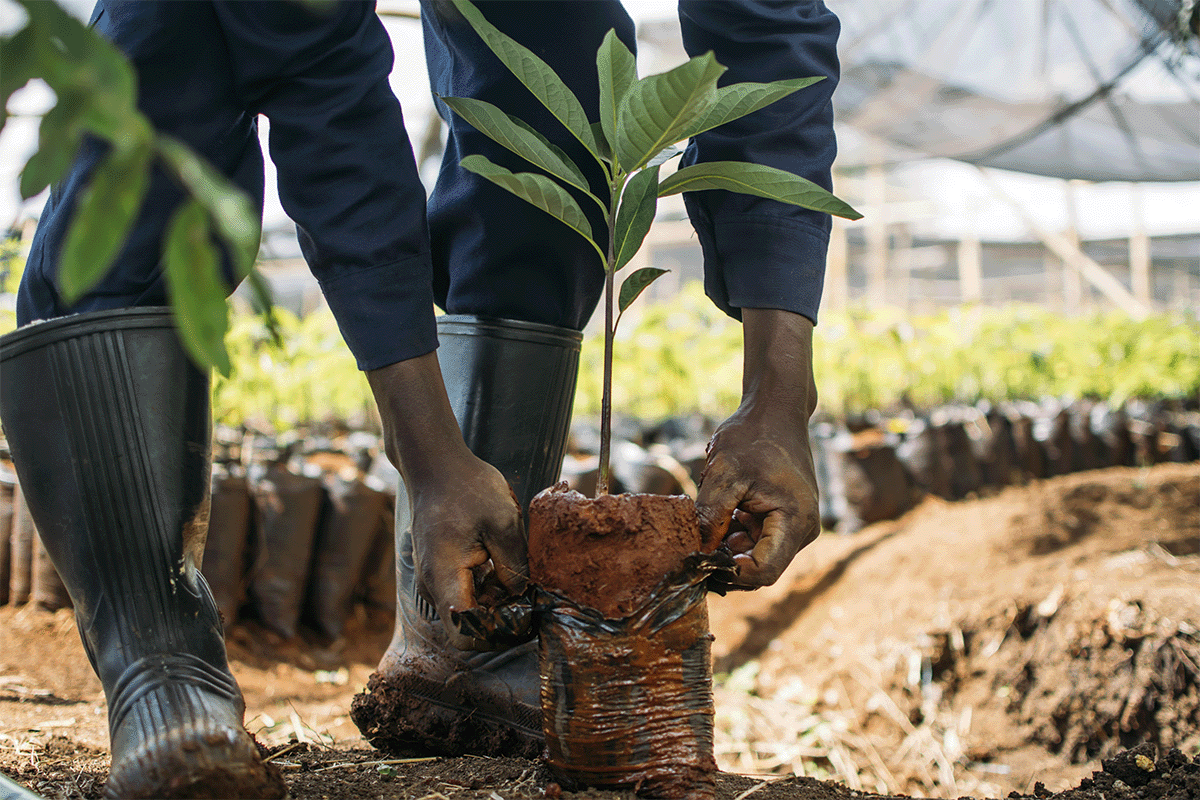 A local planting a tree in a tree nursery, Hongera Reforestation Project, DGB.
A local planting a tree in a tree nursery, Hongera Reforestation Project, DGB.
Individual actions
- Promoting sustainable choices: As individuals, we can make a significant difference by adopting more sustainable lifestyles. This can involve reducing energy consumption, choosing products with a low environmental impact, and supporting sustainable agriculture and fisheries.
- Supporting conservation organisations: Organisations like DGB Group and our conservation projects play a vital role in protecting biodiversity. By supporting our projects, you can contribute to our restoration efforts on the ground.
Read more: Biodiversity credits: an innovative financing mechanism for conservation
Policy and international cooperation
- International agreements and conventions: Global challenges require global solutions. International agreements and conventions, such as the Convention on Biological Diversity and the Paris Agreement, are crucial for setting targets and coordinating actions to protect biodiversity and support nature to prosper.
- Government policies and regulations: National governments play a pivotal role in biodiversity conservation. They can implement policies and regulations that promote sustainable land use, wildlife protection, and pollution control. Support for these policies through advocacy and participation in local governance is vital.
Through this spectrum of actions, from personal choices to international cooperation, individuals, communities, and nations can contribute to biodiversity conservation. By taking these steps, we can work together to protect our planet's diverse and wondrous array of life.
Success stories
While it's crucial to recognise the challenges of biodiversity loss, it's equally important to celebrate the successes and achievements in conservation. Here are some inspiring stories that showcase the positive impact of dedicated efforts:
The restoration of the Yellowstone gray wolf (Canis lupus)
In the 1990s, Yellowstone National Park made a pivotal decision: to reintroduce gray wolves into their ecosystem. This bold action aimed to address the imbalance created by the absence of these apex predators. The result was profound. As wolves returned, they played a crucial role in regulating herbivore populations, such as elk. This, in turn, triggered a cascade of positive effects. Aspen and willow trees, which had been overbrowsed by herbivores, flourished once more. Bird populations that relied on these trees for habitat soared. The entire ecosystem became more balanced and healthier. This success story from Yellowstone showcases the incredible resilience of nature when given the chance to recover.
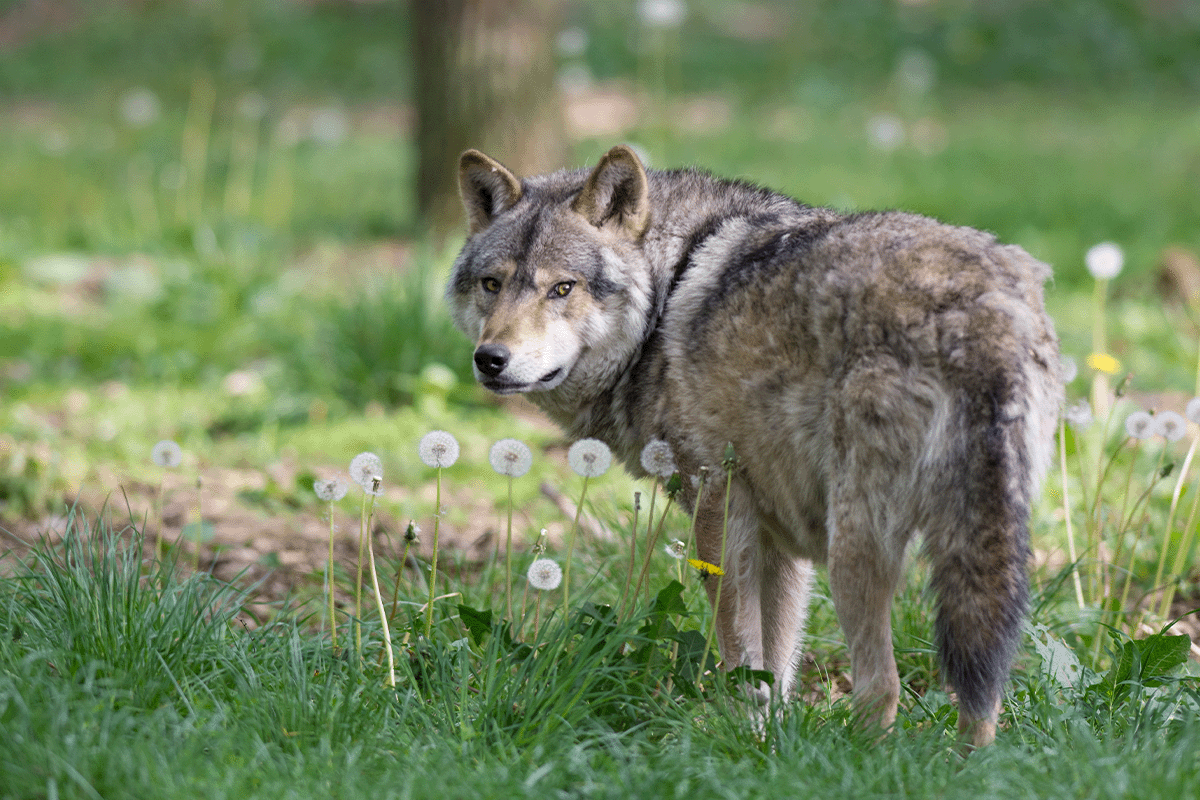 A gray wolf in its natural habitat.
A gray wolf in its natural habitat.
The success of the Great Barrier Reef Marine Park
The Great Barrier Reef, one of the world's most iconic natural wonders, has faced multiple threats, including coral bleaching and pollution. However, Australia's commitment to protecting this extraordinary ecosystem through the Great Barrier Reef Marine Park Authority has yielded positive outcomes. The implementation of strict regulations, such as controlling coastal development and fishing, has reduced human impact. Coral restoration efforts, including the cultivation of resilient coral species, have helped mitigate the effects of coral bleaching. While challenges remain, the steps taken to safeguard the reef demonstrate the potential for human intervention to protect and preserve even the most delicate and intricate ecosystems.
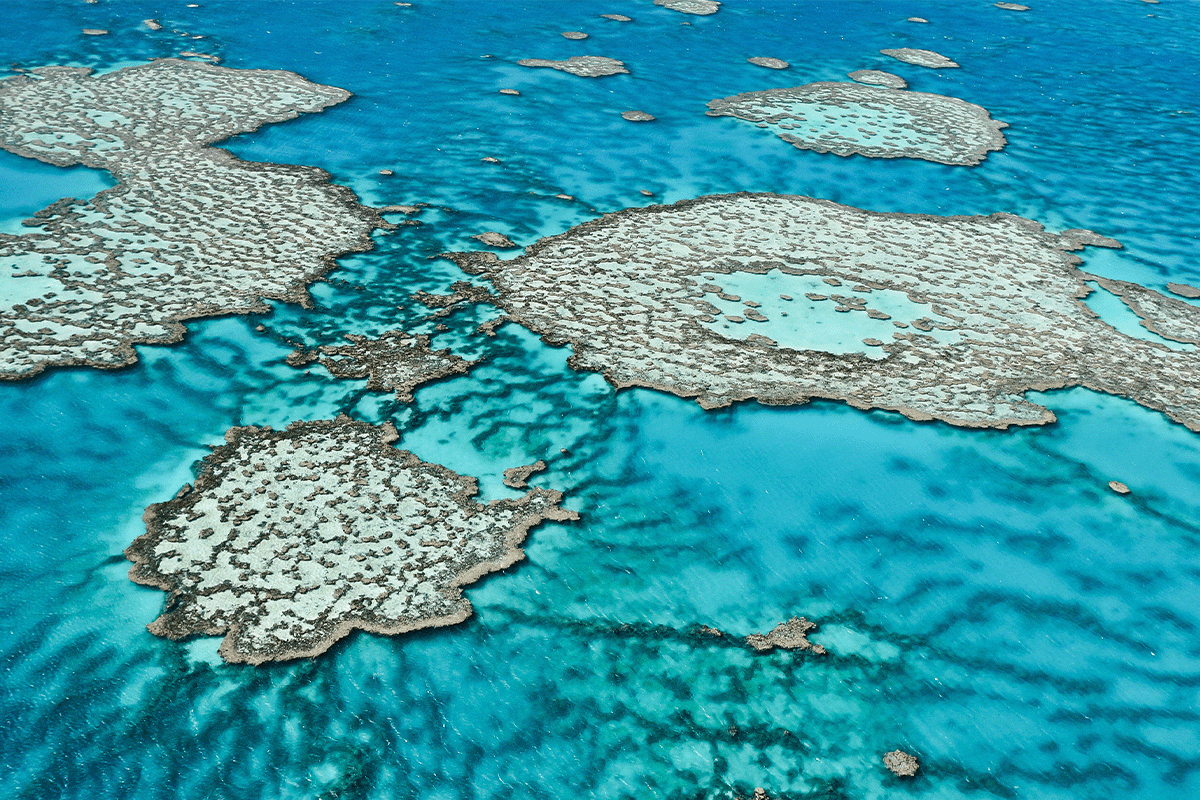 Aerial view of the Great Barrier Reef off the coast of Queensland, Australia.
Aerial view of the Great Barrier Reef off the coast of Queensland, Australia.
The story of the oryx in Oman
The Arabian oryx, once declared extinct in the wild, has seen a remarkable comeback thanks to dedicated conservation efforts in Oman. This conservation success story involves breeding programmes and habitat restoration. The Office of Environment Conservation reported that there are 600 Arabian oryx living within the breeding grounds and in the Arabian Oryx Sanctuary. The reintroduction of oryx into the wild demonstrates the resilience of species when provided with a safe environment and human support.
Read more: 7 Strategies for protecting wildlife
These success stories exemplify the power of conservation efforts and international cooperation. They remind us that, with commitment and action, we can make a real difference in preserving our planet's biodiversity.
DGB Group’s efforts for nature conservation
Throughout this journey, we've delved into the critical significance of biodiversity, the causes of its loss, and the far-reaching consequences for ecosystems. We've seen how species are interconnected, how ecosystems provide essential services, and how our actions impact the delicate balance of nature.
The creation of a flourishing biodiversity market necessitates the collaboration of various stakeholders, including landowners, project developers, investors, registries, and more. By aligning these diverse interests and establishing protocols and standards that incentivise conservation outcomes, we can ensure that biodiversity markets effectively promote sustainable development, striking a balance between economic, social, and environmental aspects.
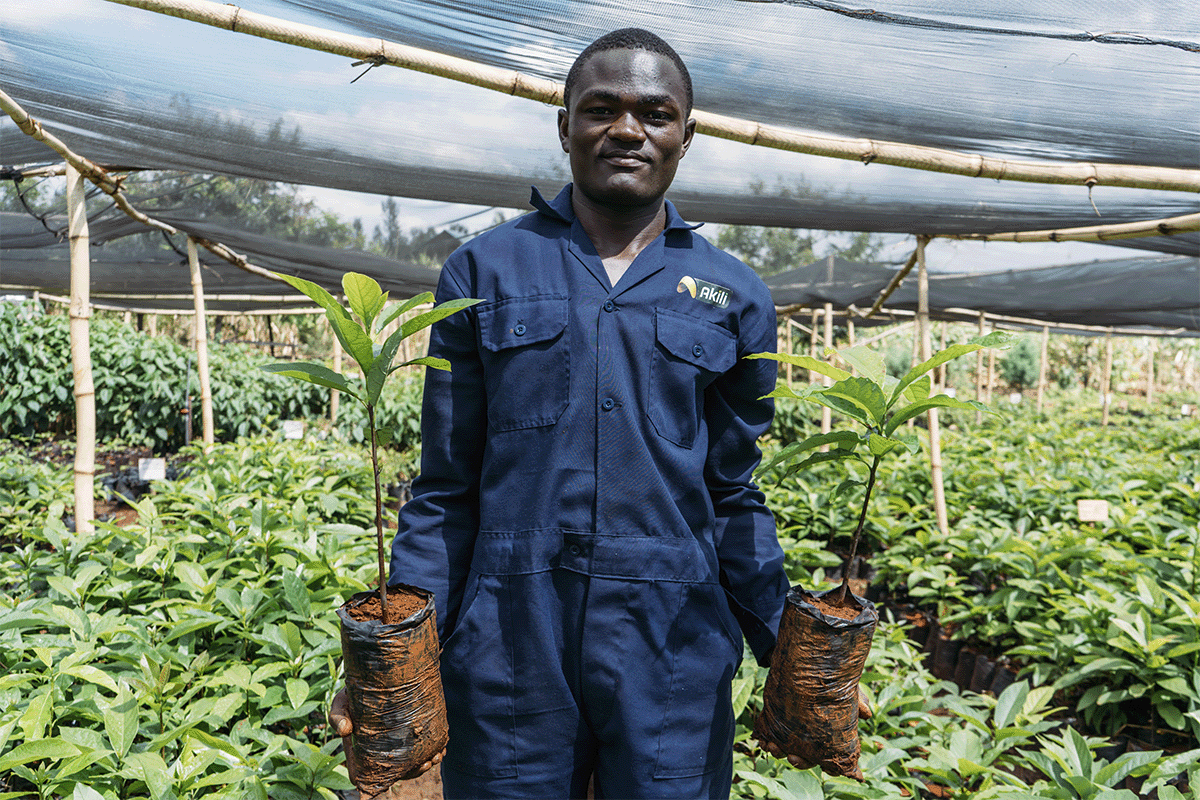 A local holding young tree seedlings, Hongera Reforestation Project, DGB.
A local holding young tree seedlings, Hongera Reforestation Project, DGB.
As we conclude our exploration of biodiversity loss and the urgent need for conservation, it's essential to highlight the remarkable initiatives of organisations like DGB (Green Earth).
DGB is at the forefront of nature conservation, demonstrating the power of collective efforts in safeguarding our planet. DGB has several projects dedicated to restoring nature, protecting ecosystems, and boosting biodiversity. Our Bulindi Chimpanzee Habitat Restoration Project aims to protect the remaining habitat of the Bulindi chimpanzees, restore nature, and support local village households in Uganda. The project was established in response to the urgent conservation needs in the area, where over 300 wild chimpanzees survive in shrinking forest fragments on agricultural land. Habitat loss has led to escalating levels of conflict between villagers and resident chimpanzees, threatening the survival of this vital population of great apes. The project's approach is to work with local communities and households to find sustainable solutions that will benefit both the chimpanzees and the people, reestablishing the symbiotic relationship between conservation and human wellbeing.
Explore DGB’s carbon removal and biodiversity projects
At DGB, we are deeply committed to the idea that investment in nature-based solutions is the most effective route to protect and restore our natural world. This commitment is exemplified through our extensive work in managing large-scale reforestation and afforestation projects, which not only restore biodiversity and degraded land but also foster sustainable community development. We firmly believe that businesses, investors, and individuals can make a meaningful difference by choosing from our range of solutions, thereby supporting nature in a transparent and accessible manner.
The responsibility for biodiversity conservation doesn't rest solely with organisations like DGB. Every individual and business can make a difference. We encourage our readers to take action. Support conservation organisations and offset your environmental impact. Make sustainable choices, advocate for policies that protect the environment, and spread awareness about the importance of biodiversity.
Measure your environmental impact
Remember, our planet's diverse array of life is not just a source of wonder; it's essential for the health of our ecosystems, our own wellbeing, and the future of generations to come. It's time for us all to be stewards of this incredible gift—our natural world.
Together, we can preserve and protect the extraordinary biodiversity that enriches our lives and sustains our planet. The path to a brighter, more biodiverse future begins with each one of us taking action today.
Invest in a flourishing biodiversity—invest for the future













